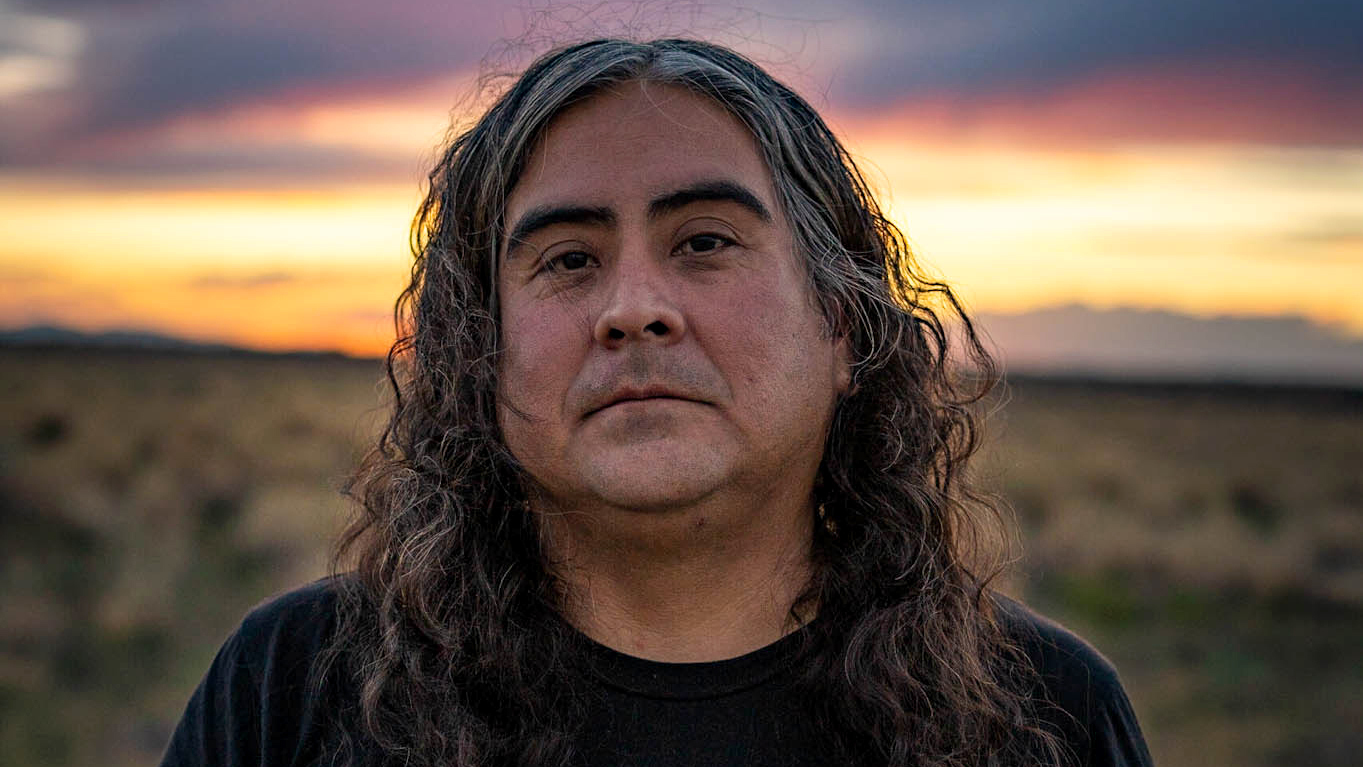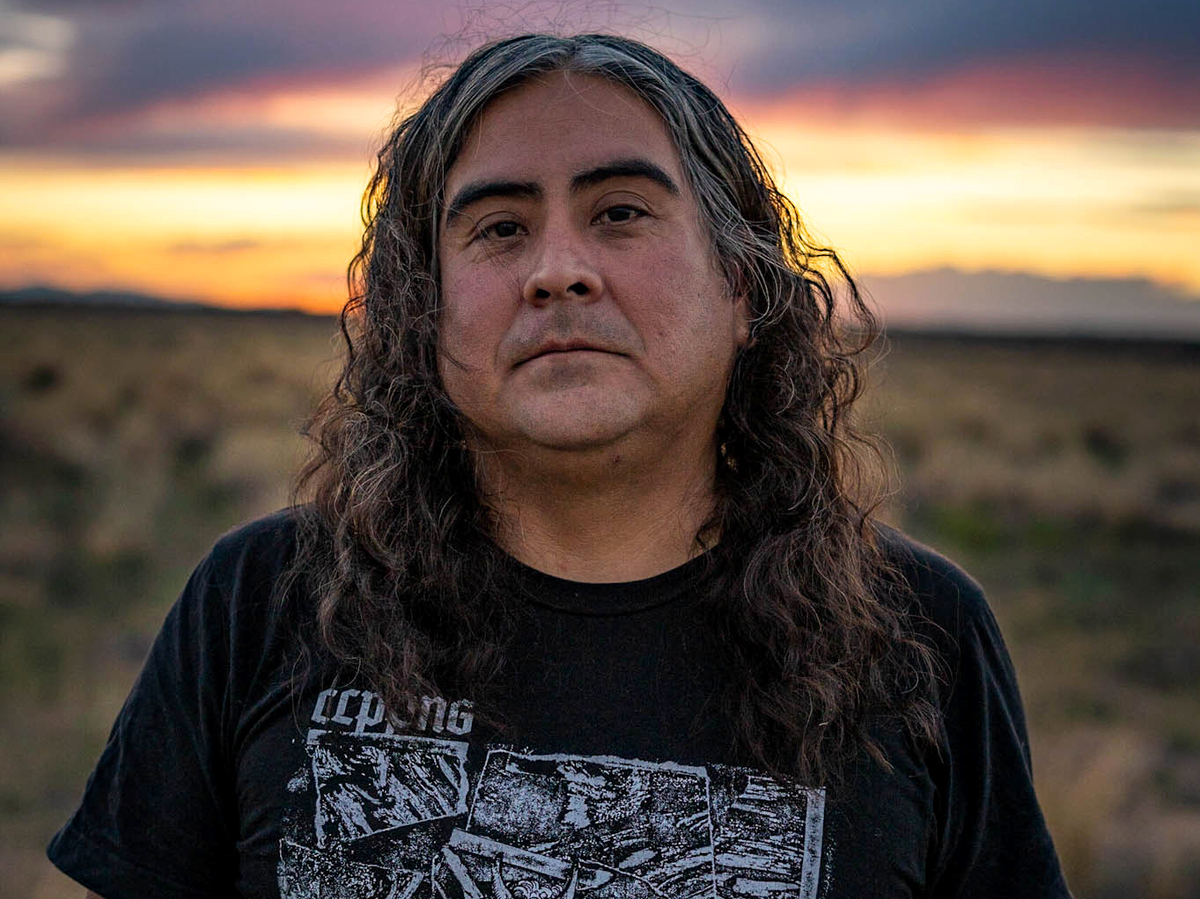
Meet up with Raven Chacon, the initial Native American to get the Pulitzer Prize for audio : Misleading Cadence : NPR

Raven Chacon’s Voiceless Mass has gained the Pulitzer Prize for tunes.
Adam Conte/Courtesy of the artist
cover caption
toggle caption
Adam Conte/Courtesy of the artist

Raven Chacon’s Voiceless Mass has won the Pulitzer Prize for new music.
Adam Conte/Courtesy of the artist
Raven Chacon’s Voiceless Mass received its planet premiere Nov. 21, 2021 at the Cathedral of St. John the Evangelist in Milwaukee, Wis. Significantly from any sort of traditional Catholic mass, the piece was composed by Chacon, a Diné composer, performer and installation artist from the Navajo Nation, for chamber orchestra and pipe organ — precisely for the pipe organ at St. John the Evangelist.
This week, Chacon became the initial Indigenous American composer to gain the Pulitzer prize for audio. In its take note on the award, the Pulitzer jury identified as Voiceless Mass a “mesmerizing, first work … that evokes the fat of history in a church location, a concentrated and impressive songs expression with a haunting, visceral effect.”
Until finally the latest yrs, songs Pulitzers have ordinarily been handed to white males. But given that 2013, five women have received the award, as has the hip-hop artist Kendrick Lamar. This year’s two other finalists were being Andy Akiho’s Seven Pillars and Anne Leilehua Lanzilotti’s with eyes the coloration of time.
Chacon’s do the job was co-commissioned by the Milwaukee business Present Audio, for the most recent iteration of its annual Thanksgiving concert, which it has called “a musical embrace of our discrepancies and shared humanity.”
While proudly dependent in Albuquerque, I arrived at Chacon by phone on Monday afternoon at a studio in which he performs in upstate New York, just an hour just after he’d won the award. Chacon mentioned he was grateful to have been given the commission in the course of lockdown from the pandemic. He explained he is happy he was ready to develop the music in the first position and that now it has been acknowledged.
The adhering to conversation has been edited for duration and clarity.
Tom Huizenga: The moment you had the fee for Voiceless Mass exactly where did the inspiration arrive from?
Raven Chacon: This was composed exclusively for this organ that is housed in the Cathedral of St. John the Evangelist in Milwaukee, and I had no notion how to create for that. So it took a large amount of again and forth with the stewards of that instrument. It took some other analysis online, speaking to other organists to notify me much more about how these functionality.
Is this your 1st composition that consists of the pipe organ?
Of course. Present Tunes has an yearly Thanksgiving Working day concert and they commissioned me to create a new piece. And just on hearing an invitation like that, that is generally anything I may switch down. Of course, as an indigenous particular person trapped in this country, which is not necessarily a little something I want to reply to. Or there may possibly be an expectation that I want to reply to that. The specific celebration of Thanksgiving is not a little something that occurred to my tribe. Related encounters transpired to native individuals of the Southwest, but I you should not always sense like I’m the one particular to communicate about that individual historic party.
Nevertheless, the second part of this was that the live performance was to be held in this church, and this church has this superb instrument that I experienced to use. And to me, it constantly comes back to the devices. I am totally fascinated by all of these instruments that have been designed for hundreds of years. And selected areas of the world get to claim them. But the truth of the matter is, they have long gone as a result of numerous distinct versions and traveled from Asia, from the Americas, from Africa, and ended up evolving by time into the instruments that we know now. And the organ is no exception. So seriously I was just making use of it as an option to uncover that instrument and at the similar time wondering about the area this instrument is saved in and the heritage of that area. How long has the church been there? What is the romantic relationship of churches in the space to the indigenous persons of existing working day Wisconsin? What is continue to happening? What is the dialogue around household educational institutions, close to suppression of voices from the church? Those are the factors that went into this piece.
Are some of people issues you just talked about references to the “Voiceless” in the title of your piece?
They are some of that. At the exact time, for the duration of lockdown, we have been viewing a ton of protests, a whole lot of actions all-around Black Life Issue, Asian Life Make any difference. I’m however considering again to the massive a single for indigenous persons at Standing Rock, and what transpired there, and the suppression, even from the media, at remaining ready to inform these tales. There was a lot more details, maybe, above lockdown that we had been ready to at minimum get a glimpse of what persons were being seeking to speak about and some of these urgent cries. Yeah, it goes back again to historical voices, or suppressed voices, but it also speaks about wherever we are these days with what individuals are making an attempt to speak about.
Voiceless Mass is scored for far more than just the organ.
It is for a massive ensemble: flute, clarinet, bass clarinet, two percussionists and strings. Also an additional instrument is sine tones. You listen to this form of hocketing, or these type of drones, that at instances you are not able to explain to if that’s one of the pipes of the organ or it really is the sine tone emitting either a significant pitch or a low pitch in that room. So the room variety of mediates, or even confuses, the timbre of both equally the pipe organ and the sine tones.
So there is a minimal electronic part to the piece as perfectly.
Yes and that’s anything I rarely do. I accomplish as a lo-fi type of noise musician with do-it-yourself electronic devices as element of my observe. But I hold that incredibly individual from the chamber get the job done that I do. And it is pretty unusual that I am going to integrate electronics or processing into the chamber functions. But this was an exception. My rationale for using sine tones was not only to complement or contrast the organ, but to also just support those people tones and the vastness of that church place. Simply because it really is these types of a resonant hall, it needed all of the help of all the instruments.
Since Voiceless Mass was very first executed in a church location, does that instantly indicate that there is a religious component for you in the piece?
Let us place it this way. A whole lot of indigenous individuals have also grown up in the Christian church. For a good deal of us in the Southwest that was the Catholic church. For myself, on a individual level, there is anything that happens in these areas, a little something that regardless of the phrases staying spoken in that area, even with the heritage of the congregation of that area, you can find however, at minimum for me, an urge to understand those people buildings as sites to replicate, locations of some kind of sacred gathering. So at any time anybody’s accumulating below the reasons of hope, less than the applications of prayer, that for absolutely sure becomes anything that’s heading to influence tunes within of these spaces. I was, of program, aware of that, and that is anything that I acknowledged as I was producing the piece.
What really should we be listening for in your piece?
Back again to the title. This is not a piece for choir, not a piece that has voices. So there was this variety of actively playing with that void, locating techniques to substitute other sounds for what one may possibly see as this type of choral team that would be singing melodies. Every thing is a form of stretched out melody, or choral composition. That may possibly be the way to feel of it — as if time has been really stretched out, elongated and not always a little something that is talking about nowadays, but audio that is talking about an ongoing story.
From now on you’re going to be referred to as Raven Chacon, Pulitzer Prize-profitable composer. Is that heading to transform factors for you?
I never feel so. I’ll probably consider a break from writing chamber audio. I do other factors. I have function up ideal now in the Whitney Biennial. Those people are continue to in the variety of compositions: I have scores up there, I have video works that are centered on music, I have field recordings. For me, there are usually other mediums to function with, other forms that audio can exist in. So I am going to in all probability come across myself jumping to another space that individuals may not take into consideration to be compositions. Video potentially, or tracks.
